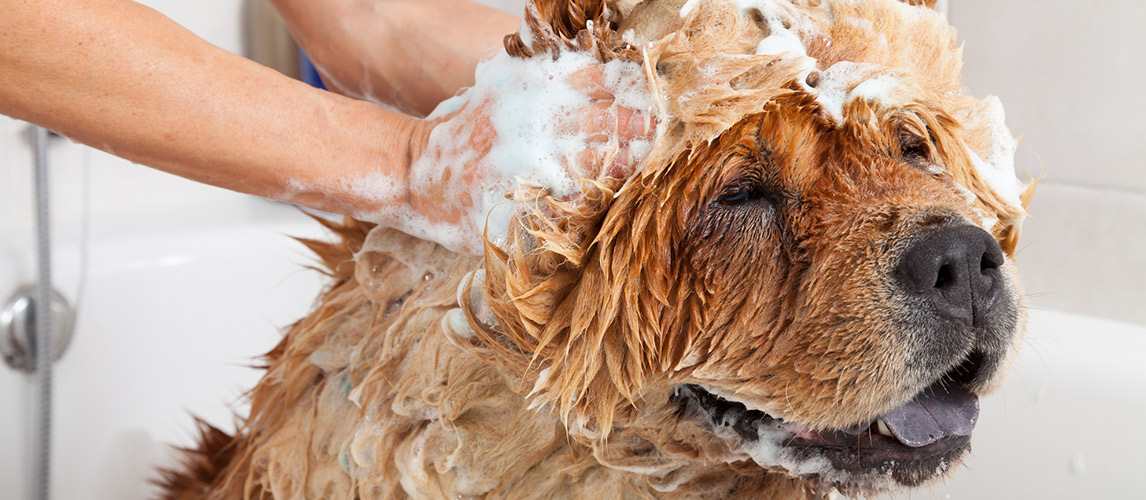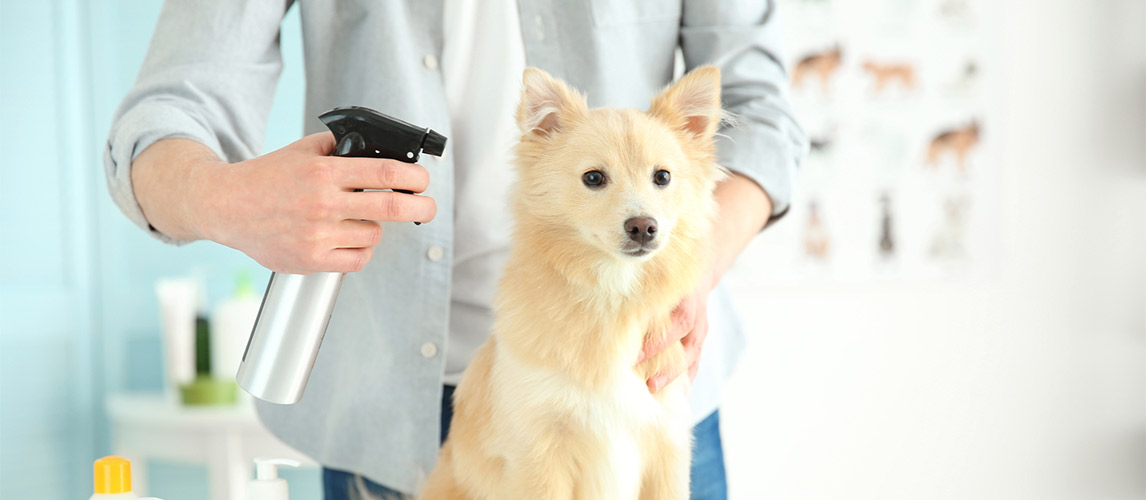Some dogs love being bathed, others hate it. Whichever camp your pet falls into, as with any project, the key to success is in the preparation! Approach it like a military operation and bath time will be over before you know it. Having everything to hand before you get started means you can reduce the time it takes, which is good for you – and good for your impatient friend, particularly if he finds bath time a chore.
Understanding How Often And Why
Knowing why you need to wash your dog routinely can toughen you up against any protests you might encounter from him. After all, being clean will keep him free from parasites and his skin and coat shining and clean. As a general rule, the average dog should be washed once a month; but then, as we all know, there’s no such thing as an average canine! If your dog’s coat is oily, or he’s magnetically attracted to mud and grime, then he might need a good wash more often. Urban dogs that don’t encounter the same levels of muck and filth as their countryside counterparts, or that have extremely smooth or water-repellent coats, can escape with bathing less frequently without losing any friends.

Making Your Pre-Bath Checks
Get all your tools together before you start. You don’t want to rely on the good will of your dog while you run off halfway through to find the shampoo or the brush. You’re more likely to come back and find the room soaked or the dog long gone. Give his coat a good brush beforehand. This removes any tangles or matting, allowing you to soap him up and rinse him off more easily. One good tip is to place a sink plug strainer in the plughole before you start. This stops excesses of loosened hair from clogging up your drains.
If you know your dog actively dislikes bath time, if he’s a larger breed or if you have never bathed him before, it may also help to have a second pair of hands in case you need assistance. A wriggling dog is no fun when there’s water and shampoo flying around…
Take a look at our article on the Best Dog Paw Washer.
Running The Bath
Using a non-slip mat in the dog bath tub will put your dog more at ease. That way, he isn’t going to slip and slide once in the water, which will only disquiet him. What temperature should the water be? Well, because your pet’s skin is more sensitive than yours, you’ll want the water to be lukewarm, and certainly no warmer than if you were bathing a baby. It’s easy for larger breeds to overheat quickly too, so if your dog falls into this category, even cooler than that will do. It’s a good idea to speak to your dog calmly and affectionately, encouraging him and reassuring him throughout the process.
Soap Off The Grime
One absolute must is to buy a good quality dog shampoo or puppy shampoo for your canine friend. It’s not just a case of grabbing your own and using that, no matter how luxurious or expensive it is. There are very good reasons for using a shampoo that’s fit-for-purpose for dogs. The main one is that dogs have very different skin to us. It’s thinner, for one thing. Whereas a dog’s epidermis is around 3-5 cells in thickness, a human’s is considerably tougher at 10-15 cells. The pH level of a dog’s skin is different too – typically between 6.2 and 7.4, whereas a human’s sits around 5.5. This makes your pet’s skin more vulnerable to damage from harsh chemicals. Your favorite shampoo may well make your hair shiny and sleek, but it’s going to aggravate your dog’s skin, causing peeling, flakiness, and general discomfort.
First, dampen your dog’s hair all over, then lather the shampoo down from the neck towards each paw. Use a dampened washcloth to wipe his face, eyes, and ears; this avoids getting soap in his eyes as much as possible.
Rinse And Repeat Rinse
Leaving any traces of the dog shampoo in your pet’s coat may lead to irritation of the skin, so the rinse phase is one of the most critical of the whole process. Rinse and rinse again, using your showerhead or a plastic jug to ensure even the hard-to-reach areas are cleansed of soap.
Time To Dry
Drying your dog off after he’s been bathed is a must, especially in cold weather, so don’t let him run off just yet. Towel drying is fine if your dog is tolerant, rarely gets muddy and therefore doesn’t need bathing too often. But if you have a mid- to long-haired mutt, or he needs frequent bathing due to his extreme affinity with smelly mud, then all that repeated rubbing with rough, human towels could lead to discomfort of the skin. Your pet store will sell softer, more absorbent pet towels, or you could opt for a specialist dog hairdryer. If he’ll tolerate it, this latter piece of kit will leave his hair as soft and silky as if he’d been to a professional groomer’s.

It’s important that you should never use your own hairdryer on him, though. Even on the lowest setting, your dryer is likely to be too hot for his skin and for his body temperature, which is naturally higher than a human’s. One other advantage to a dog hairdryer is that it has a stronger airflow than the ones we use on ourselves, so drying time is quicker. That means less stress for both of you, and he can be off and playing (but hopefully not rolling in the mud again) before he loses patience with the whole process.
Reward – And Lavishly!
To get your dog to see bath time in a positive light, it’s a good idea to reward him with small dog treats throughout, as well as acknowledging good behavior. Keep your calm at all times, but be assertive so he knows who’s boss here. But once it’s all over, reinforce the positives and play down any negatives by smothering your pooch with petting and praise. You both survived bath time, till next time at least!
Sources:
- Katherine Sullivan, The Most Important Do’s and Don’ts When Grooming Your Dog at Home, PETA
- Dog Foster Care Manual, Best Friends Animal Society










